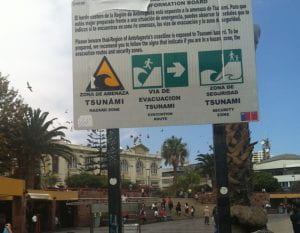Governance ‘of’ and ‘by’ COVID-19: the Spotlight on Private and Non-State Actors
By Saqar ' M Al Zaabi, on 25 May 2020
Written by Eija Meriläinen, Postdoc at the Institute for Risk and Disaster Reduction (IRDR) and the Institute for Global Health (IGH)
In the response to COVID-19 pandemic, the doings and undoings of nation-states and public authorities have captured the spotlight, if Finnish and Anglophone media coverage is anything to go by. In this blog, I argue that fixing the attention on governments alone can obscure the extent to which private and non-state actors influence how disaster governance unfolds.
While SARS-CoV-2 coronavirus can be viewed as a hazard, according to UNISDR’s definition, the actual disruptive impacts can be referred to as a disaster. How a disaster is viewed is an important element in identifying what actually needs governance.
Various disaster researchers have strived to bust the myth of ‘natural disasters’, drawing attention to the social and political root causes of disasters. Related to the ‘unnaturalness of disasters’, it cannot be emphasised enough that the impacts are not equally faced and suffered. Quite the contrary, people who are in the status quo marginalised in society, are likely to face the heaviest toll from disasters. Those who are most vulnerable to disasters are also disproportionately likely to be those facing the dire effects of urbanization, economic globalization and global environmental change. As vulnerability does not exist in a social vacuum, it is a product of unequal social processes. Therefore, addressing it means addressing the socio-economic conditions underlying its existence.
When looking at the unequal impacts of disasters, we should not only be looking at the marginalized and vulnerable but also at those who are not deemed vulnerable. Facilitation is an important phenomenon that refers to how individuals and actors with power and resources can insulate themselves from hazards’ impacts, and even reap benefits from disasters. With respect to COVID-19, as one level of generalization, while it initially may have been the more affluent people travelling across the globe and catching the disease, as a social group they are unlikely to be the ones whose lives suffer most as a result of the pandemic. Within and across the countries, people with precarious livelihoods and poor living situations are the ones who are repeatedly exposed to the disease, without appropriate access to healthcare – whether we are talking about the homeless or the low-paid essential workers.
Disaster governance can be split between two strands: governance of exception and governance by exception. The first refers to how a hazard is mitigated against, prepared for, responded to and recovered from by various actors. This definition comes close to typical DRR activities though the focus on governance highlights the diffused nature of the undertaking. For instance, response to COVID-19 involves practices of quarantining and social distancing as well as developing a vaccination. Meanwhile, governance by exception refers to the ways in which exceptional circumstances are leveraged to drive political measures, that may do very little to address the impacts of the disaster on those affected, let alone the patterns of marginalization and facilitation. For instance, the emergency powers granted to Hungary’s Orban and Fidesz-led government with no end date in sight have been criticized for being a way to extend their power and crackdown on the opposition, rather than per se address COVID-19.
Governments, national or local, continue to be central actors in both stands of disaster governance, having, for example, the power to declare a state of emergency. In the case of COVID-19, we have seen that while states have been hollowed out, they still have a tremendous power to restrict the rights of citizens. However, their resources and influence in relation to other actors have been on the decline in many contexts. Furthermore, while intergovernmental agencies, like the WHO, are central actors in facing transnational disasters such as the pandemic, the precarity of their existence has been recently exposed, as the president of the U.S. has halted the funding to the organization. This is worrying in a situation where, according to Society for International Development, only 20% the WHO’s budget is for its core mandate, while the remaining 80% is earmarked by donor countries for specific projects.
As a whole, non-state actors, such as businesses, NGOs and think-tanks, increasingly influence how disaster governance unfolds. They may directly assume the responsibilities previously associated with the role of the state, or shape the context as a whole, for instance, through deploying certain discourses. They could also act as suppliers to governments. We have seen this in COVID-19. For instance, the nationally widely publicized face mask escapade led to some reshuffling at the Finnish National Emergency Supply Agency. A major issue with this increasing power of private and non-state actors is that disaster governance efforts might become increasingly diffused and fragmented. Despite this fragmentation, some powerful actors can also gain disproportionate influence over disaster governance within and across national borders.
In the case of COVID-19, it would be important for the media and researchers to shine the spotlight not only on governmental actions but also in the ways in which private and non-state actors are entangled into the governance of and by disaster.
 Close
Close
















